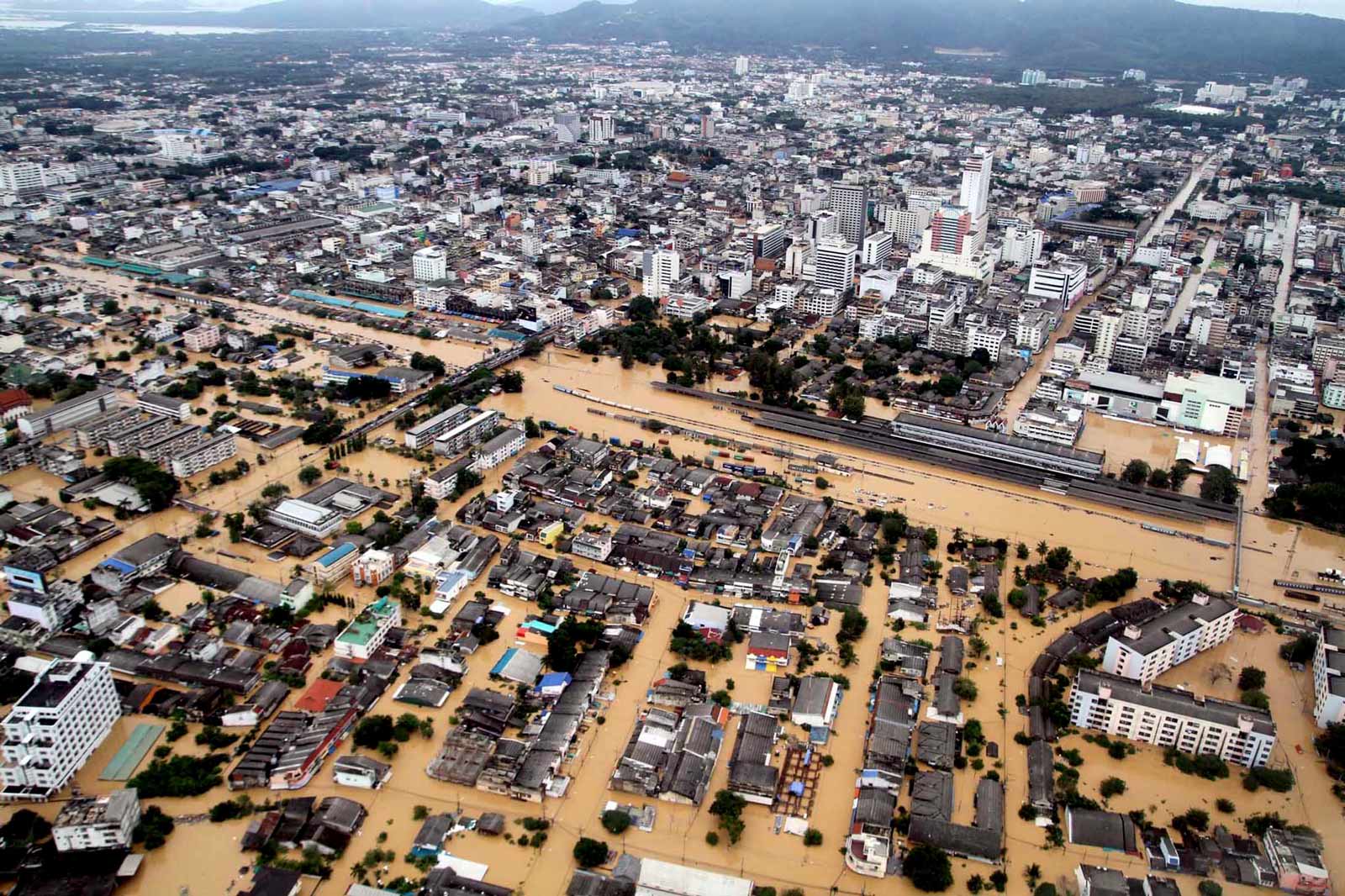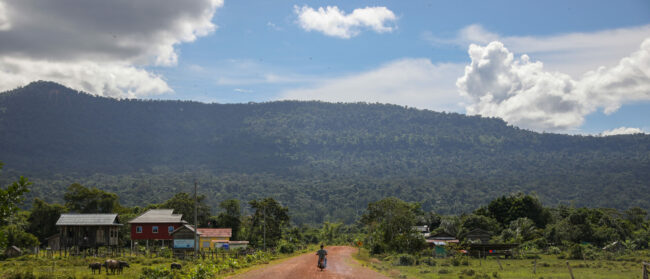Editor’s note: Indonesian President Joko Widodo has announced plans to move the nation’s capital from Jakarta to East Kalimantan. But although congestion, slums and rampant flooding made worse by climate collapse have all been given as reasons for the radical move, Jakarta is not the only sinking city in Southeast Asia. In January 2011, we looked at the impact of rising sea levels and rampant extreme weather on the region’s megacities.
The risks associated with climate change are accelerating, according to the International Panel on Climate Change (IPCC): between now and 2100, sea levels are predicted to rise by 0.6 metres or more – aggravated by land subsidence – and sea surface temperatures by 3°C. Tropical cyclones will be more intense, extreme waves and storm surges larger. By 2070, the number of people at risk of flooding in coastal cities around the world is expected to have risen from 40 million currently to a staggering 150 million – and the effects will be felt nowhere more so than here in Asia.
As urban populations swell, expansion into suburban areas risky for human habitation is increasing at an unprecedented rate throughout the region, much of it unregulated. By 2070, Manila, Ho Chi Minh City and Bangkok will be among the top 11 Asian megacities most vulnerable to the impacts of a rapidly changing climate, according to a 2009 study by the International Research Development Centre (IRDC). Despite the scale of the threat, however, few major developing cities in the region have attempted to make adaptation a core element of long-term urban planning, the World Bank has warned, and it is the region’s urban poor – often living in high-risk environments such as floodplains and employed in the informal sector with few assets – who stand to lose most.
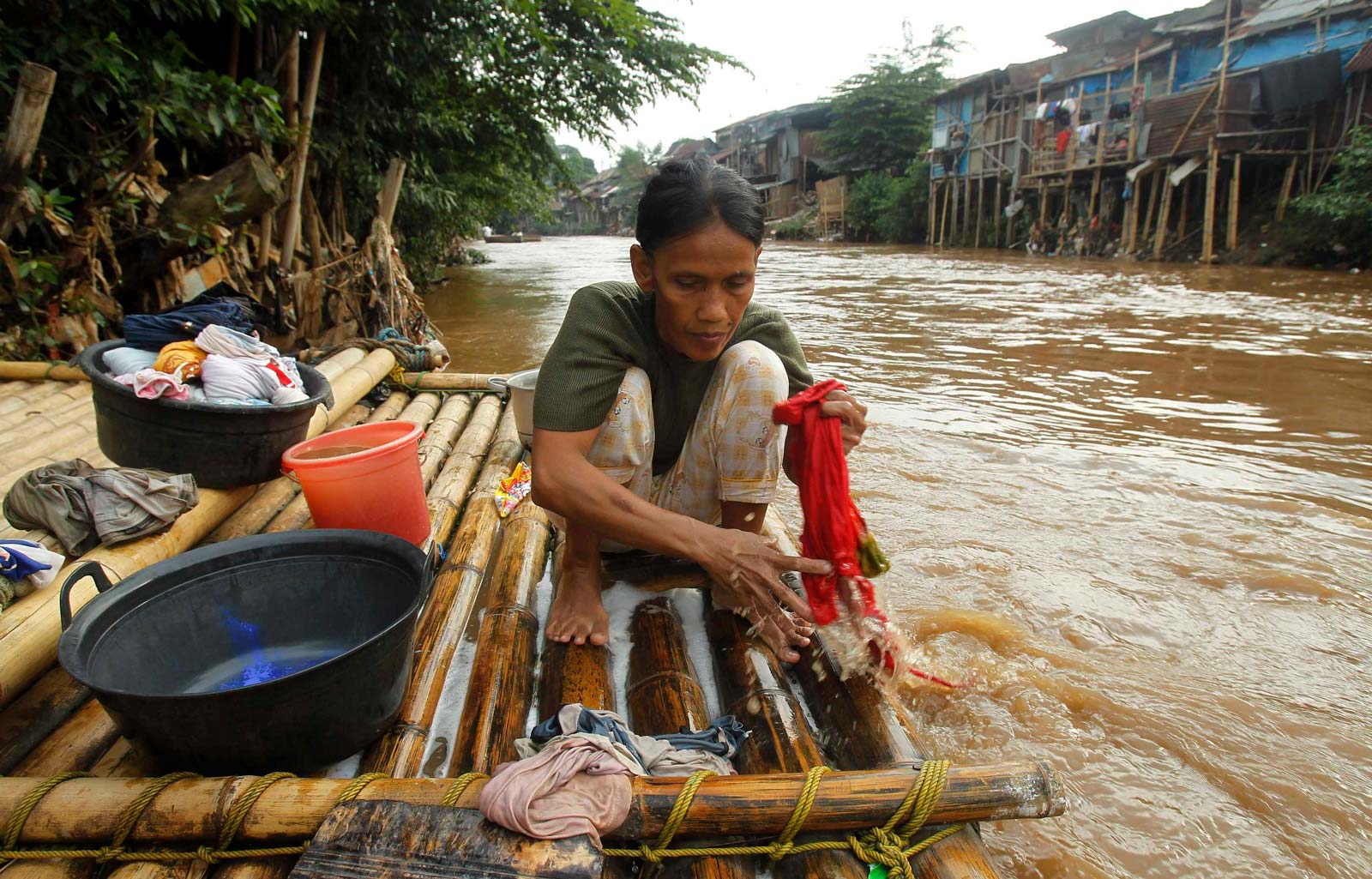
Cyclones and higher-than-normal monsoon rains deluged parts of Southeast Asia in October 2010, killing more than 100 people and affecting millions in key rice-producing regions. Thailand experienced its worst flooding in five decades, affecting more than 1.3 million people and forcing the closure of 17 major roads; heavy rains in Cambodia wrought an estimated $70 million in damages and destroyed rice crops, leaving eight people dead; in Myanmar, high waters prompted the evacuation of 11,000 people to relief camps. The heavier-than-usual rainfall was attributed in part to a La Nina weather event, which contributes to cooling, but scientists released new data in December predicting escalating climate change threats and urging diplomats to deliver tangible progress at the Cancun summit. Failure to do so, environmental experts warn, could spell disaster for the region’s coastal cities.
“There is now no doubt that low-lying areas and the deltas of Asia are highly vulnerable to climate change, mostly coming from sea level rise and frequent flooding associated with increasing frequency and intensity of cyclones and typhoons,” said Dr Herminia Francisco, director of the Economy and Environment Programme for Southeast Asia (EEPSEA) at the IRDC. “The future is bleak and this demands concrete action on disaster management, adaptation and mitigation.”
A World Meteorological Organisation analysis of past disasters revealed extreme weather events have a greater impact in Asia than anywhere else. According to the report, 75% of global economic losses between 1980 and 2005 were caused by climate-related events and most of those losses occurred in Asia. A more recent study showed that the situation worsened in 2009, with 90% of the world’s natural disasters caused by hydro-meteorological events.
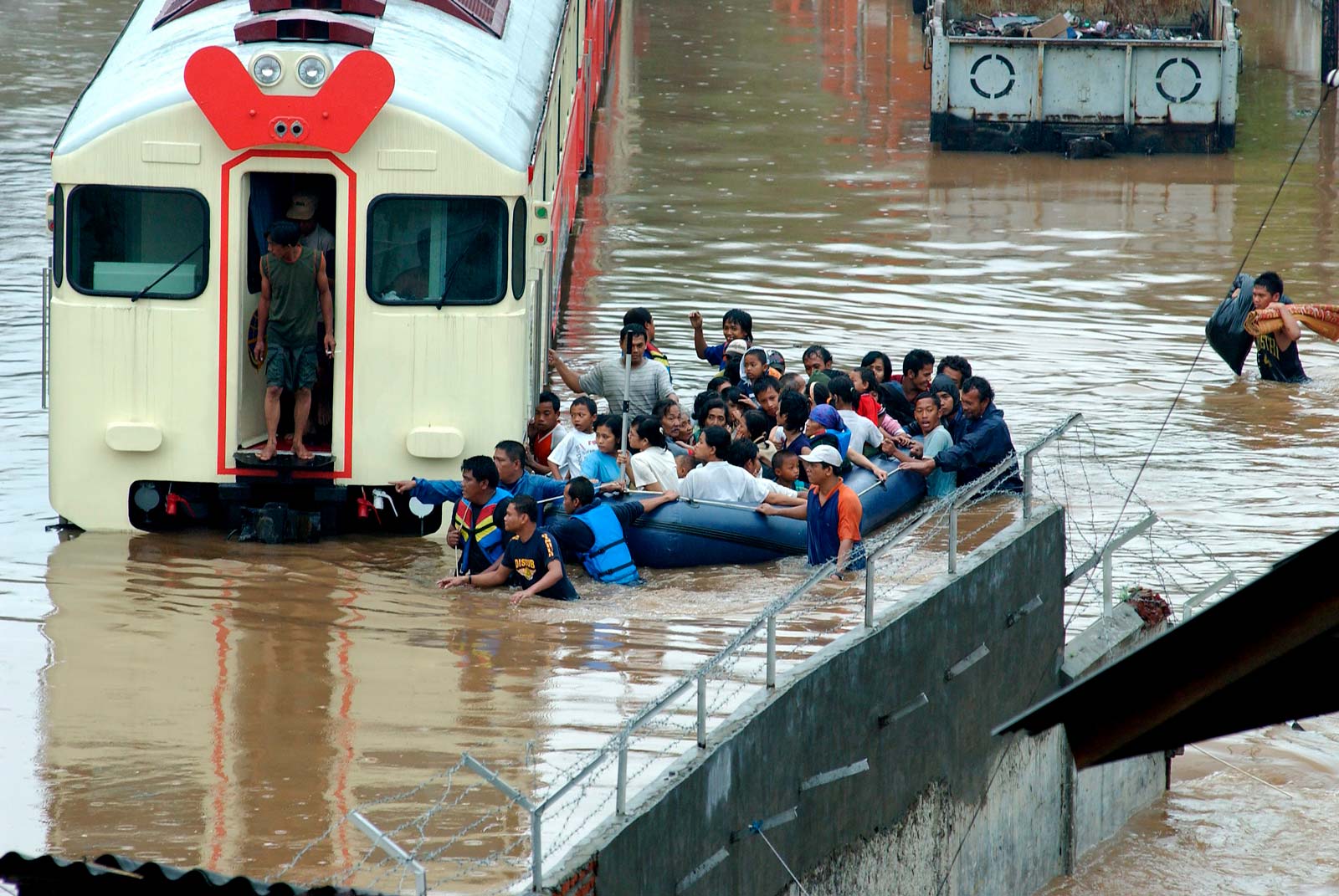
In 2010, the World Bank published the results of a global study into the economics of adaptation to climate change, again concluding that Asia will incur the highest costs. The report centred on three developing coastal megacities: Manila in the Philippines, Ho Chi Minh City in Vietnam and Bangkok, Thailand. It concluded that the frequency of extreme weather events and flood-prone areas in all three cities is likely to increase, along with the number of people at risk. The costs of the resulting damage is ‘likely to be substantial’, the report noted, ranging from 2% to 6% of regional Gross Domestic Product (GDP).
Bangkok is particularly prone to seasonal flooding. The Bangkok Municipal Region, the economic epicentre of the nation, covers 1,569 sq kms and is located in the delta of the Chao Phraya River basin – the largest river basin in Thailand, covering 35% of the country. Much of the city, with its six million inhabitants, is less than two metres above sea level. By 2050, according to the ‘low emissions scenario’ predicted in line with a 1.9°C increase in temperature, the number of people exposed to severe flooding in Bangkok could increase by as much as 75% to one million inhabitants, according to the World Bank, with one in eight of those affected living below the poverty line ($49 per person per month as of 2007). One third of the city’s most vulnerable can expect to be under more than half a metre of water for at least a week every year, a two-fold increase on current levels.
One of the major non-climatic contributors to flood damage is land subsidence, caused by the extraction of water (often for industry) from underground aquifers fasting than it can be replaced; the conversion of canals into roads and the reclamation of floodplains for residential and industry purposes. In January 2010, the UN warned that flooding in Bangkok is likely to become so severe by the middle of this century that parts of the capital may have to be abandoned altogether. “Subsidence and poor urban planning have resulted in Bangkok gradually sinking between 2cm and 5cm a year”, Thai researchers were quoted as saying in the UN report. Resulting damage is expected to double between 2008 and 2050, making land subsidence responsible for 70% of the increase in flooding costs.
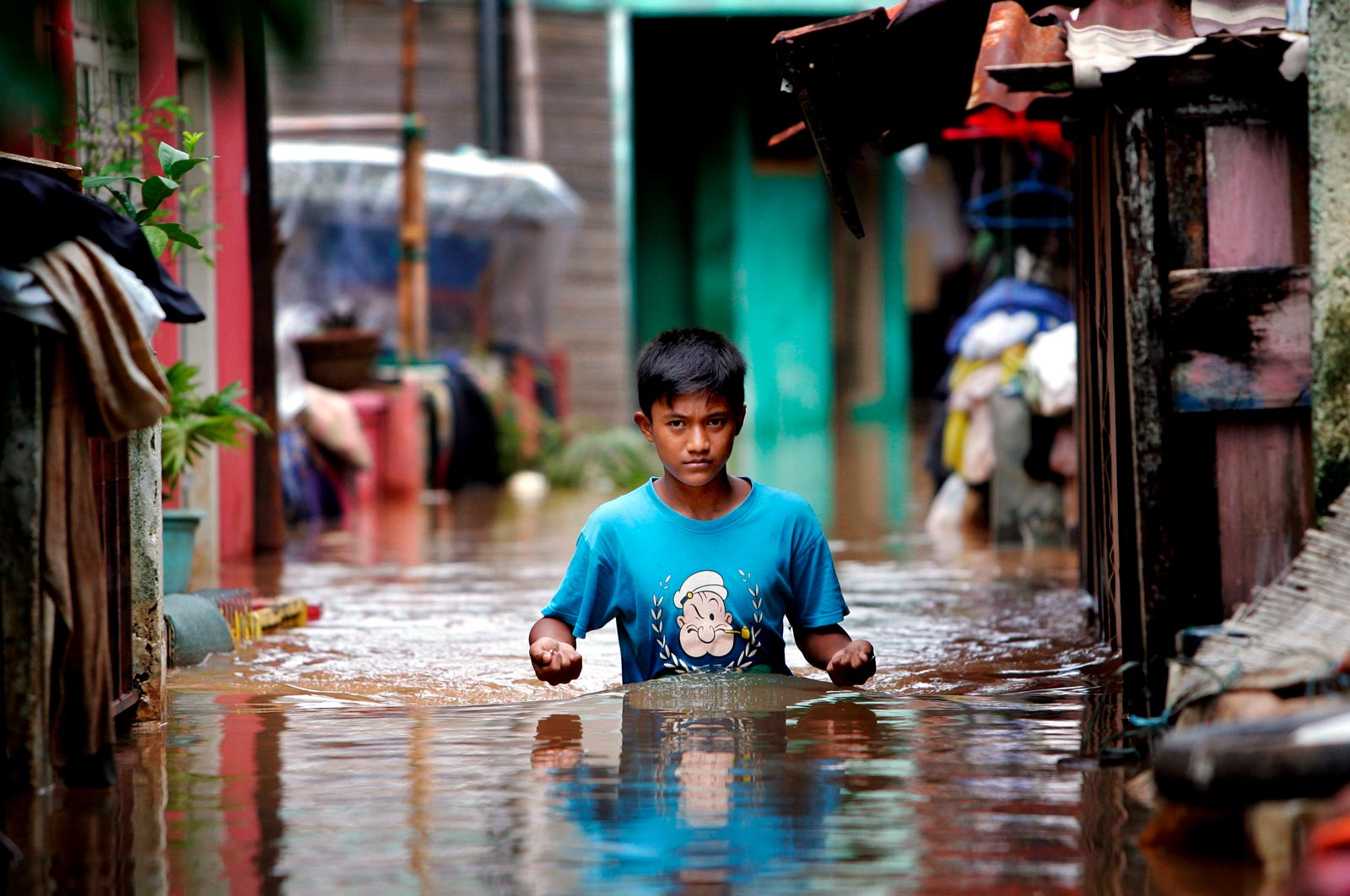
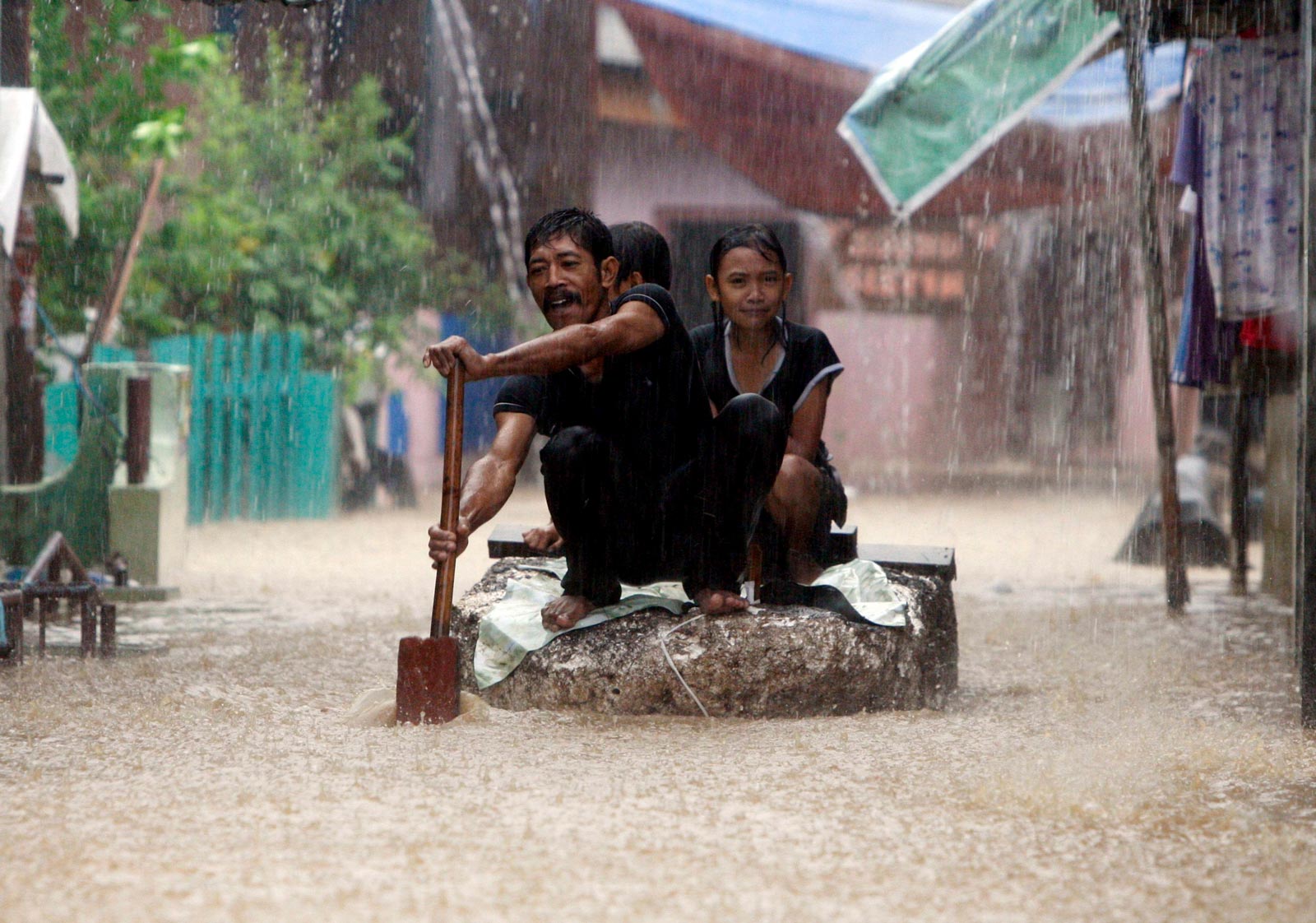
The city’s current protection system includes a flood embankment surrounding the city and a pumped drainage system. Further measures have been planned and budgeted through to 2014. In November 2010, Bangkok Governor Sukhumbhand Paribatra announced $533 million plans to construct four giant drainage tunnels beneath the city by 2016. Five metres wide and up to 13.5 kilometres long, they are designed to double Bangkok’s drainage capacity. “This year’s rainy season has made it obvious that we need the tunnels,” he said.
Similar endeavours are underway elsewhere in Asia. In 2008, the Indonesian capital Jakarta started dredging rivers and expanding its canal network in a bid to reduce flooding by 75% by 2016. In Ho Chi Minh City, Vietnam, a 33-kilometre-long dyke and sluice system is being built at an estimated cost of $650 million. Also in 2008, Singapore spent $176 million on its first freshwater reservoir, with a 10,000-hectare catchment area spanning a sixth of the country – albeit with questionable results. “When we get extraordinary rainfall… no amount of engineering can prevent flooding,” Minister Mentor Lee Kuan Yew said.
But are such measures enough? Not according to EEPSEA, which warns more must be done if future disasters are to be avoided. “Efforts should include not only structural measures [dykes and sea walls], but also softer approaches such as early warning systems and, most importantly, developing maps of flood-prone areas in coastal areas and informing people of the risk they face living there so they can plan and react accordingly,” said Dr Francisco. “Recent flooding in Thailand and Manila showed early flood warning is wanting and this is a big disappointment: it doesn’t cost a lot of money compared to the potential benefits and lives it will save.”
Manila, a low-lying area in the path of Pacific typhoons and criss-crossed by the Pasig River and its tributaries, is one of the cities most vulnerable to storm surges. When tropical storm Ketsana struck in September 2009, the resultant flooding was the worst in 40 years, with waters reaching as high as seven metres. More than 80% of the city was underwater, according to a report by CNN, causing immense damage to housing and infrastructure and forcing almost 300,000 predominantly poor people to flee their homes. The typhoon left in excess of 2,000 people suffering from leptospirosis, contracted through contact with water contaminated with animal urine, of which more than 160 died.
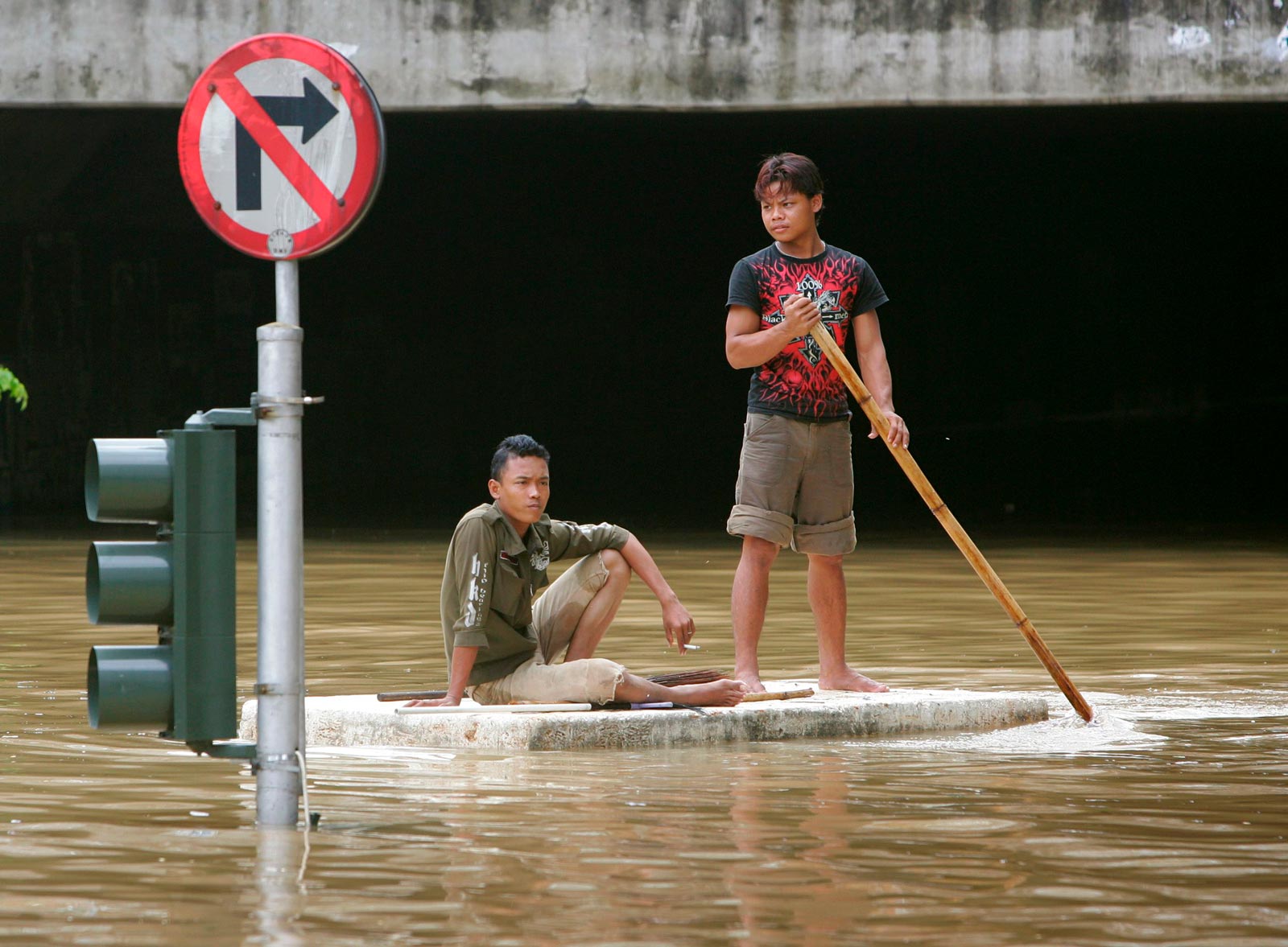
Despite its historic vulnerability to extreme weather events, the city has come under fire for its prevention strategies. A Flood Protection Master Plan developed in 1990 still serves as the basis for planning and the World Bank has warned that by 2050, even if the plan has been implemented fully, more than 1.3 million people would still be adversely affected in the event of a ‘1-in-100-years storm’. A recent report by business risk consultants Pacific Strategies and Assessments concluded that ‘Few, if any, objective experts or knowledgeable observers believe that the Philippine government is capable of handling or mitigating any major disaster that impacts on Manila.’
On the eve of last month’s Cancun summit, however, Philippines President Benigno Aquino III declared a Global Warming and Climate Change Consciousness Week and called for a $426.5 million Laguna Lake rehabilitation project to be halted in order to “remove centuries-old silt, save the watershed, install global positioning mapping, relocate illegal settlers and provide livelihood programmes for displaced fishermen.” Described by EEPSEA as “a major policy that could reduce damages from Manila flooding, if implemented,” such measures – if indeed implemented – would nonetheless remain a rarity in the region. As the World Bank concluded in its report, ‘All of this highlights the need to better understand and prepare for climate-related risks and incorporate appropriate adaptation measures into urban planning.’
The concern has particular resonance in Vietnam, which, according to an official from the Ministry of Planning and Investment, has “almost run out of land along its coastline” as developers capitalise on the demand for resort properties. By the end of 2010, the nation will have 55 such projects, with a total of 5,318 villas and 6,601 apartments (by comparison Phuket, a more mature resort market in Asia, has 5,624 villas and apartments in total) – many of them in Da Nang, an area already prone to violent storm surges and typhoons. Whether Southeast Asia proves resilient to the predicted increase in severe weather events that accompany an evolving climate in the long-term will depend on similar strategies being implemented across Southeast Asia.
“We’ve seen recent stories of how extreme climate events have flooded parts of Thailand, the Philippines, Vietnam, China, Bangladesh, Pakistan and India and witnessed the huge losses – including loss of life – associated with these events,” said Dr Francisco. “Studies by the World Bank, Asian Development Bank and many others have painted a grim picture for the coastal cities of Asia. We are all psyched into expecting the worst is yet to come.”
